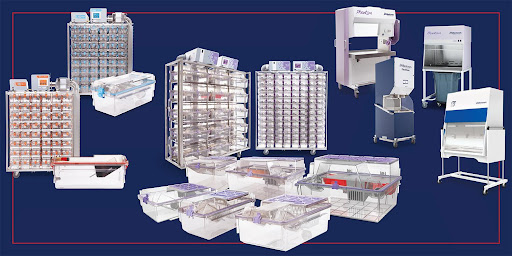An effectively run animal care program possesses the power to create an astounding ripple effect. Just think about it. Any given biomedical research program can save and impact millions of lives worldwide. For example, animal research propels new vaccines, improves medications, and helps develop and make cures for sinister diseases more accessible.1 Hence, no lab animal program can afford to miss a beat! And one way to ensure you don’t is with sound financial footing.3 Overall, an efficient budget and financial program are essential for a well-run animal care program.3 So, let’s get into expert advice on how to budget lab animal research better.
For laboratory animal care programs to be at their best, program directors and managers must have an in-depth knowledge of the program’s finances.3 That knowledge should help lead their decision-making processes. For example, “innovative programs are adapting proactive budgeting and tracking processes” to challenge costs and provide “researchers and animals with faster, better, cheaper, safer services.”3
Is your research program doing everything possible to approach your budget proactively? Read more for expert advice on how to budget lab animal research better and why it’s critical.
Learning Overview
- Program planning
- Budgeting basics
- Budget monitoring
Program Planning is Paramount to Budget Lab Animal Research Efficiently
Many experts consider “the planning process the prequel to populating budgets.”3 Program planning is the space and process for outlining the program’s vision, making decisions about predicted animal populations, possible services, staffing needs, and more. How is this information populated and predicted? Decision-makers should consider past experiences, historical data, and research findings before making final choices.3
During the planning process, program managers should aim to answer the following questions (and more) with input from investigators, program staff, and administration.3
- What are the organization’s purposes, goals, and objectives?
- What core activities are essential?
- Were there instances of previous spending that proved wasteful?
- What additional programs can we eliminate if cost isn’t an object?
- What one-time expenditures might be considered, such as upgrading equipment, improving the physical plant, or reducing operational costs?
- What peer programs are attractive for comparison, and how does your program compare?
Budgeting Basics for Improving Lab Animal Care Programs
A laboratory animal program budget aims to predict how much it will cost to carry out the activities outlined in the planning phase.3 Also, it should “demonstrate the most cost-efficient means to investigate the research question.”2 Additionally, it should include all of the essential direct and indirect costs predicted in the planning phase.2

Direct costs include personnel, services, consumables, equipment, and travel. Some of these expenses account for the majority of your research spending. For example, “personnel costs may represent between 65 and 75% of the total operating budget,” and consumables may represent “20–25%.”2 All direct costs will play a paramount role in the success of your animal care program. Hence, it is imperative to plan wisely.
Below is a detailed list of annual direct costs from the Management of Animal Care and Use Programs in Research, Education, and Testing.2
- Animal facility staffing salaries and benefits (including full-time, part-time, and contract)
- Training costs associated with new staff as well as continued learning
- Space, utilities, and other infrastructure charges
- Food, bedding, and supplies
- Sentinel programs
- Veterinary care
- Dedicated facility space and administrative costs
- Animal facility-related equipment and preventive maintenance agreements and repairs
Program Monitoring is Essential to Better Budget Lab Animal Research
Monitoring your budget is equally as important as developing your budget.3 But monitoring your budget isn’t simply a one-time thing. It requires consistent attention throughout the year. For example, analyze your actual expenses versus what you predicted costs. How did they match up? Does there seem to be problem areas? Consistently measuring this information can help you pivot to make better decisions for the present and future budgets.
How Allentown Can Help You With Your Research Budget
The beginning of summer means warmer weather and longer days, but it also potentially means the end of your fiscal year, and pressure to plan a flawless new budget is quickly rising. But rest assured, as your global solutions provider, we are here to help.

We’re offering discounted pricing on our available inventory, including equipment and services, to help you meet your budget goals impeccably. Click the contact form here so we can help!
References
- MacArthur Clark, Judy, et al. “Communicating about Animal Research with the Public.” ILAR Journal, vol. 60, no. 1, 2019, pp. 34–42. https://doi.org/10.1093/ilar/ilz007.
- Parfrey, Patrick S., and Brendan Barrett. “Budgeting, Funding and Managing Clinical Research Projects .” Clinical Epidemiology: Practice and Methods, vol. 473, Springer, Boston, 2022.
- Weichbrod, Robert H., et al. “Fiscal Management .” Management of Animal Care and Use Programs in Research, Education, and Testing, FL, Boca Raton, 2018.

